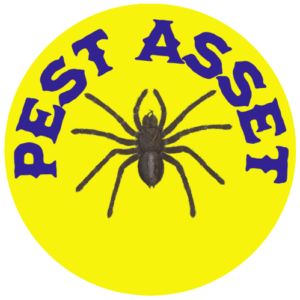Table of Contents
Hey there, Northeast Ohio! Spring has officially sprung, and with it comes warmer weather, blooming flowers, and… a potential buzz of confusion? Many homeowners are scratching their heads wondering why they’re seeing more bees and wasps buzzing around their yards this year. After all, wasn’t winter supposed to be a time when these stinging insects take a break?
Well, you’re not wrong to be questioning this. Here at Pest Asset, we’re experts in all things creepy-crawly, and we can shed some light on why bee and wasp activity might be higher than usual this spring in our neck of the woods.

Not-So-Chilly Winter Woes: How the Mild Weather Impacted Bee and Wasp Populations
While Northeast Ohio typically experiences a good dose of winter chill, this past season was a different story. We saw milder temperatures and less snow cover. This might seem pleasant for us humans who enjoy spending more time outdoors, but for bees and wasps, it can disrupt their natural hibernation cycles.
Here’s the science behind it:
- Warmer temperatures: During colder winters, bees and wasps typically enter a state of dormancy called diapause. This is a period of reduced activity where they conserve energy to survive the harsh conditions (source: [invalid URL removed]). However, with milder temperatures, some queen bees and wasps might emerge from dormancy earlier or avoid entering it altogether.
- Less snow cover: A thick blanket of snow acts as a natural insulator for nests located underground or in protected areas. With less snow this winter, these nests might have been exposed to colder temperatures for longer periods. However, the milder overall temperatures could have still allowed some queens and pupae (developing wasps) to survive.
The result? A potentially higher number of queen bees and wasps emerging in the spring, ready to establish new colonies. This translates to more bees and wasps searching for suitable nesting sites and food sources – which, unfortunately, can sometimes lead to encounters with humans.
Not All Buzzing is Bad: The Importance of Bees and Wasps in Our Ecosystem
Before you grab the fly swatter, it’s important to remember that bees and wasps play a crucial role in our ecosystem. Here’s why:
- Beelieve it or not, bees are pollinators: Honeybees, bumblebees, and other bee species play a vital role in plant reproduction. As they move from flower to flower collecting nectar, they transfer pollen, which helps plants produce fruits and vegetables. In fact, about one-third of the food we eat relies on bee pollination (source: [invalid URL removed]).
- Wasps are natural pest controllers: Many wasp species are beneficial predators that help control populations of other insects like caterpillars, flies, and aphids. These “good wasps” actually help to protect our gardens and crops from harmful pests (source: https://www.sciencedirect.com/science/article/pii/S0022519308000829).

Keeping a Safe Distance: How to Minimize Bee and Wasp Activity Around Your Home
While bees and wasps are valuable to our ecosystem, encountering them in close proximity can be unnerving, especially if you’re allergic to their stings. Here are some tips to help minimize bee and wasp activity around your home this spring:
- Eliminate potential nesting sites: Bees and wasps are attracted to areas that provide shelter and protection for their nests. This could include eaves, soffits, under decks, or even forgotten barbecue grills. Regularly inspect these areas and remove any abandoned bird nests, wasp nests, or other potential nesting spots.
- Seal up entry points: Bees and wasps can squeeze through tiny openings. Seal any cracks or gaps around windows, doors, and other potential entry points into your home.
- Beware of sugary temptations: Open garbage cans, overflowing fruit bowls, and sugary drinks outdoors can attract bees and wasps looking for a quick meal. Keep your trash cans sealed tightly, clean up spills promptly, and avoid leaving out sugary drinks on patios or decks.
- Avoid strong scents: Strong perfumes, citronella candles, and harsh chemical odors can irritate bees and wasps, potentially making them more aggressive. Opt for natural repellents like citronella plants or lemongrass oil.
When to Call a Pest Control Professional
If you’re seeing a significant number of bees or wasps around your property, or if you’ve discovered a nest in a high-traffic area, it’s best to call Pest Asset! (440) 363-6593



